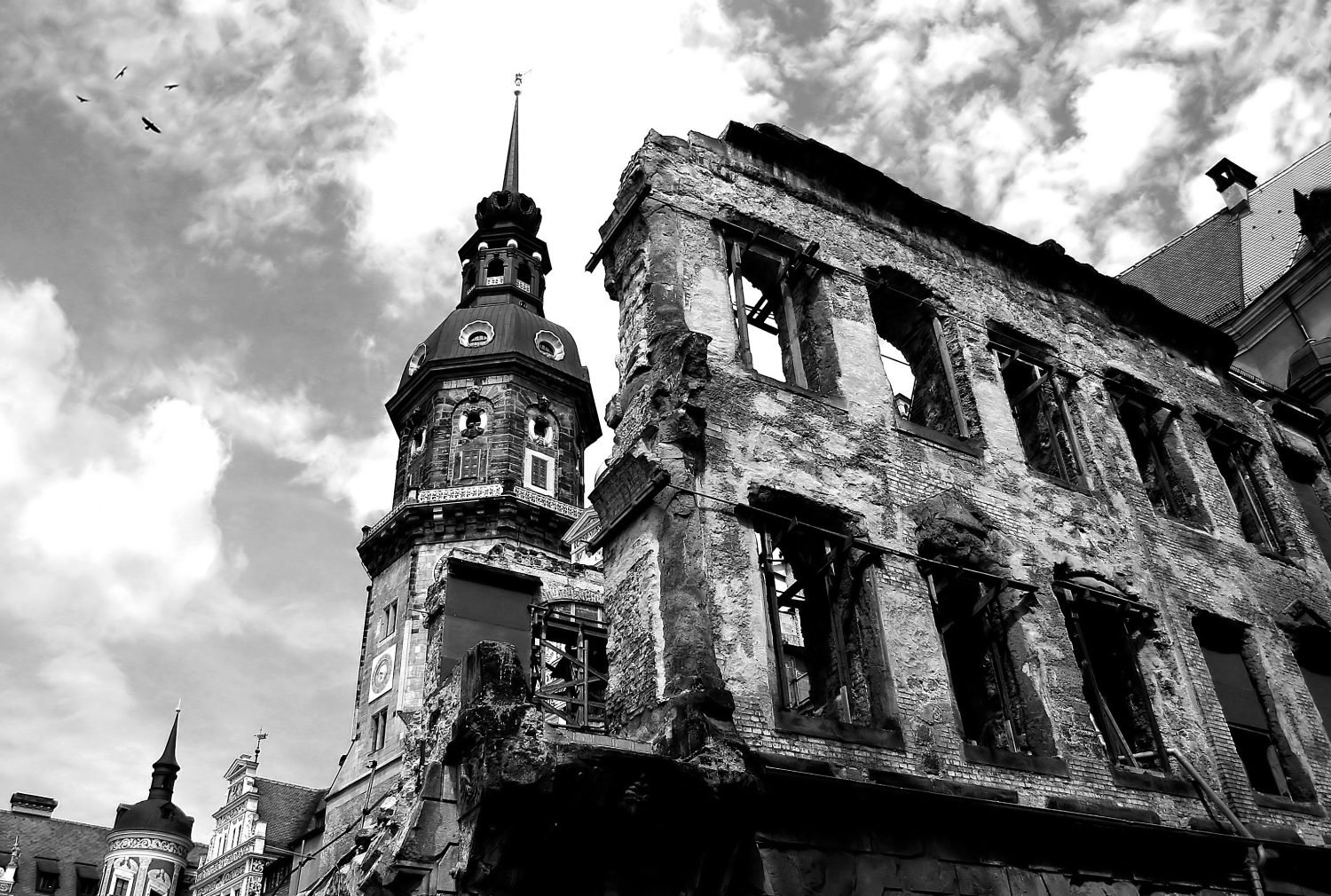Between February 13 and 15, 1945, the combined efforts of the United States Army Air Force and Royal Air Force dropped an estimated 3,900 bombs on Germany’s seventh-largest city. The result of the attack on Dresden during World War II was nothing short of devastation.
It’s believed close to 1,600 acres of the city center were completely leveled to assist the Russian advances on Germany. With this in mind, let’s take a look at some footage of the nighttime bombing raids on Dresden that show the devastation taking place.
Bombers Heading to Dresden
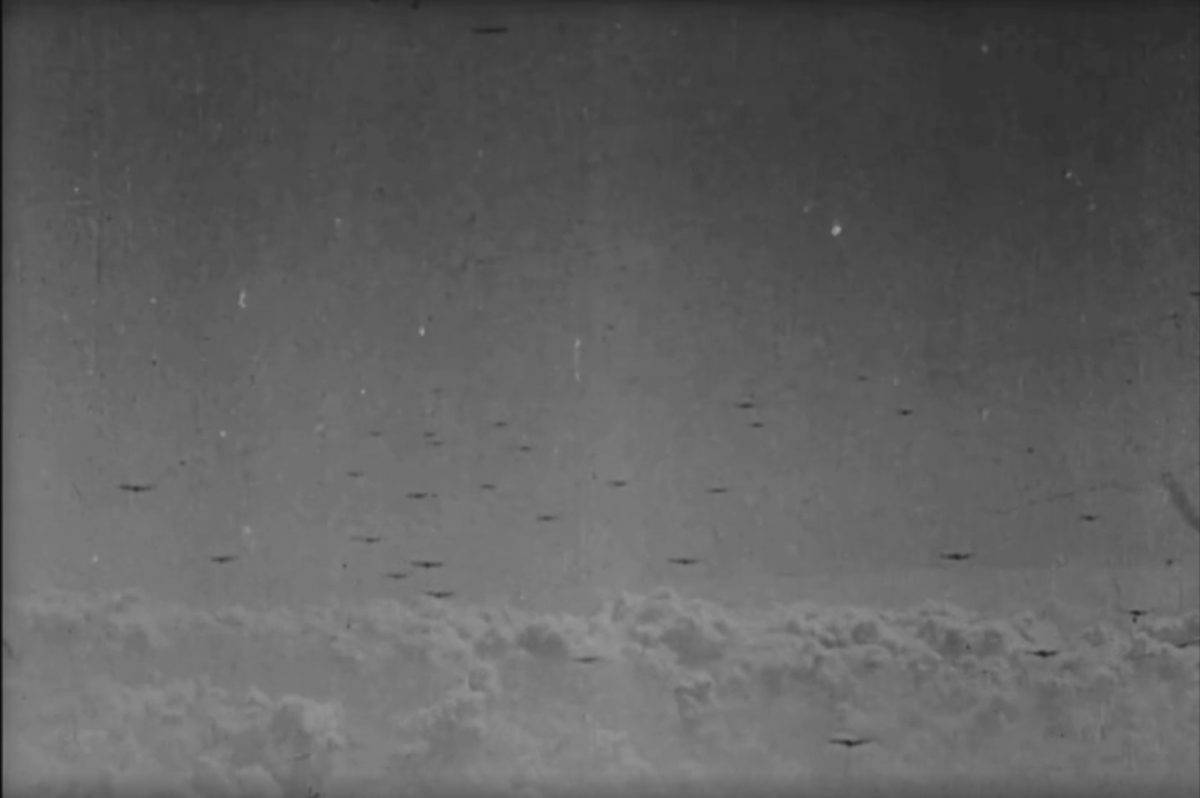
In one of the first images from the video, you can see the scope of one of the bombing waves headed to Dresden. This image shows just some of the 1,350 US bombers that were making their way to Dresden to make a bombing run.
Arriving in Dresden
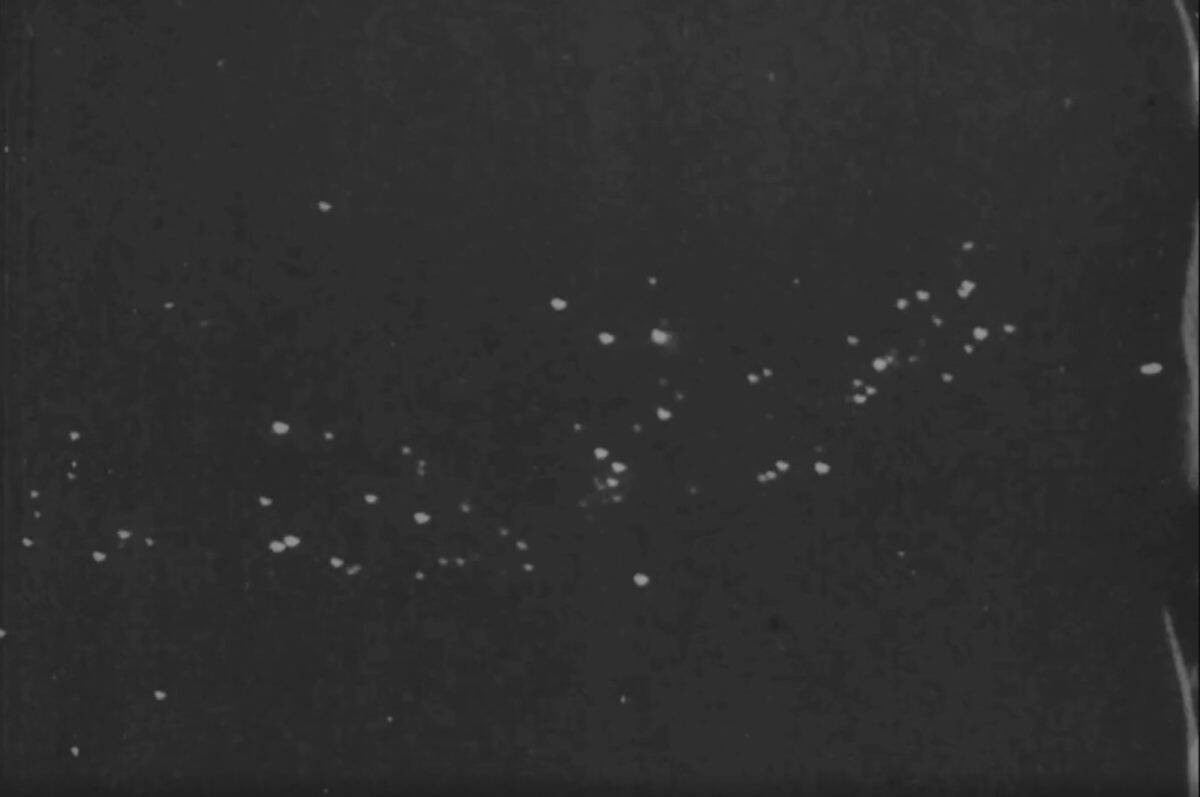
The cameraman in one of the bombers shows the crew arriving overhead in Dresden. You can see better in the video, but Dresden’s evening nights appear below before the bombs fall.
First Bomb Drops
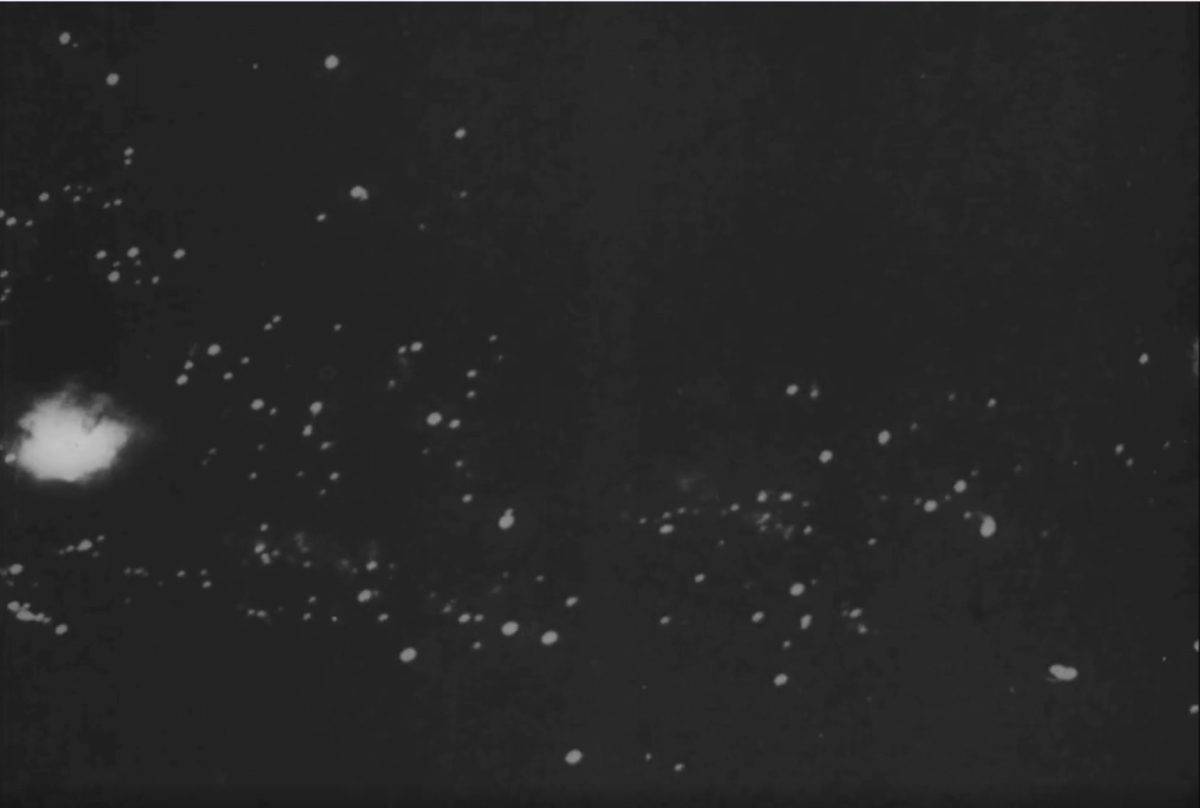
This photo shows the first bombs falling on Dresden from one of the bombers. You can see the large explosion on the left-hand side of the picture against the city’s evening lights.
Additional Bombs Fall
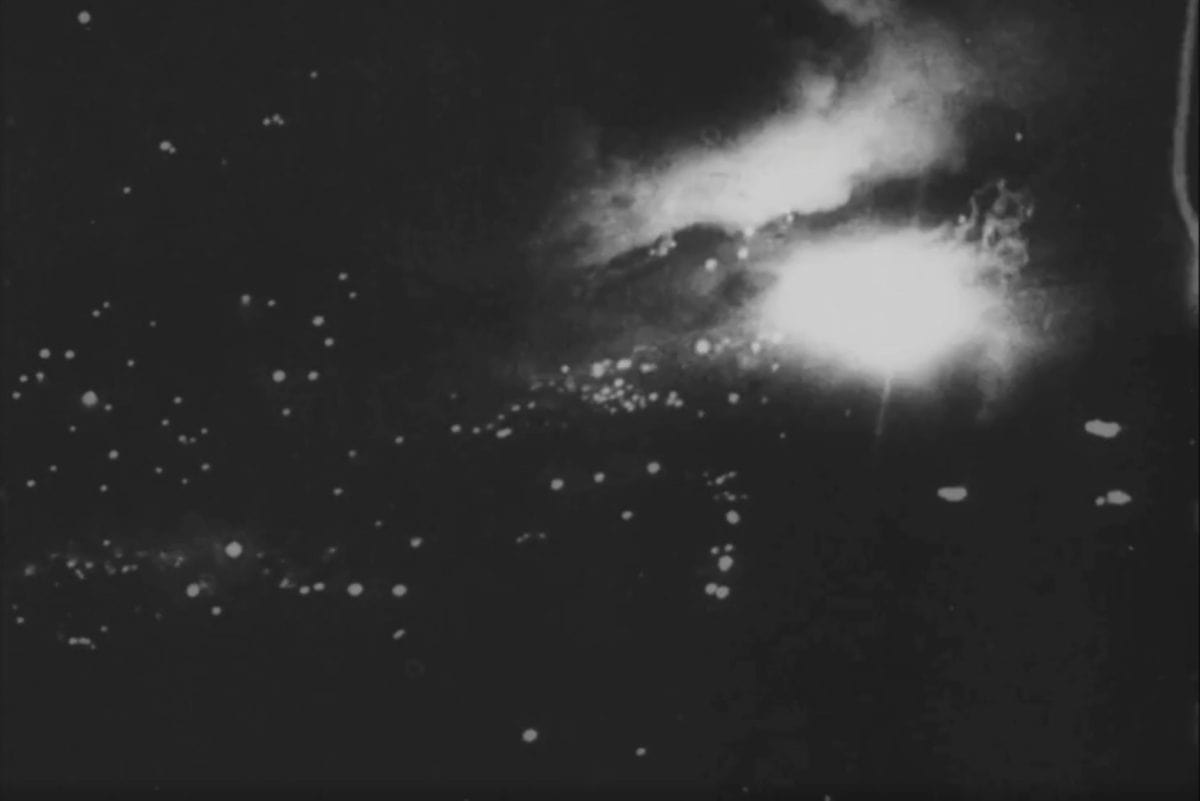
As soon as additional bomber crews are overhead, more bombs start to fall on Dresden. With so many planes part of this bombing run, Dresden is about to get pounded.
Scarecrow Bomb
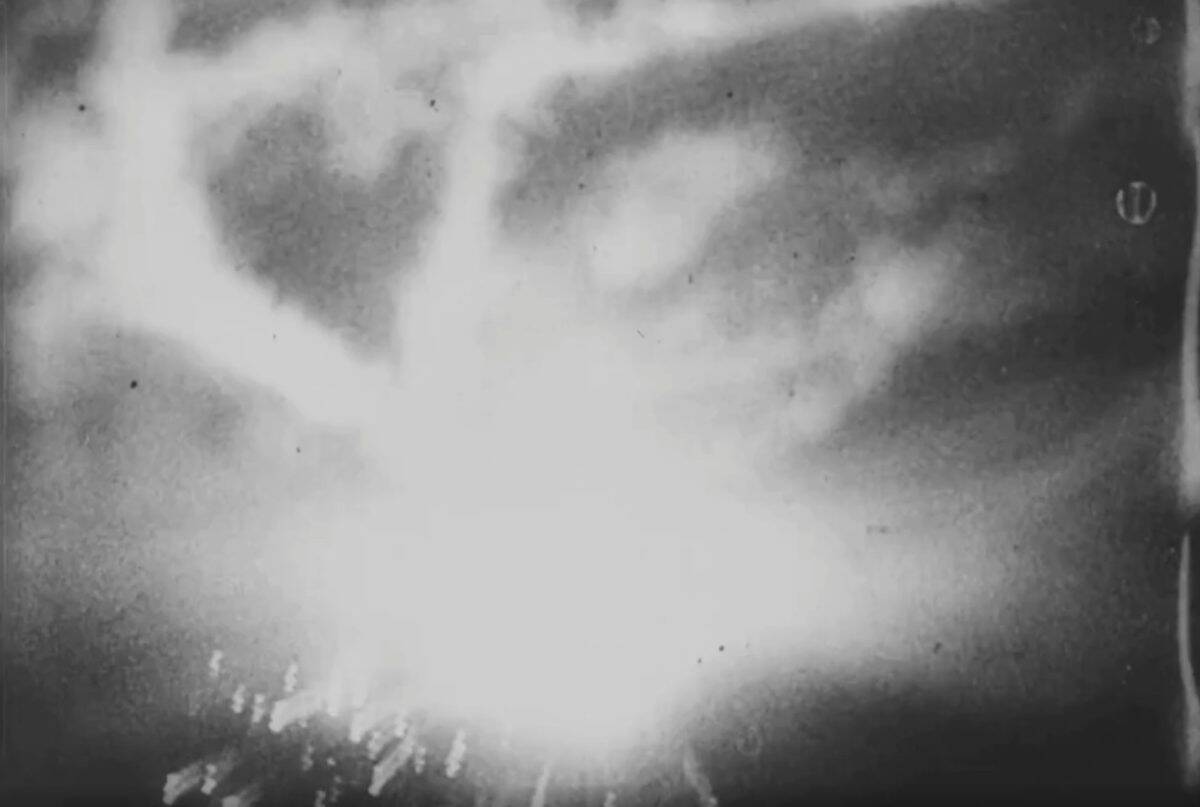
As the bombs start falling, German defenses are counterattacking using weapons like a “scarecrow bomb.” This device was fired into the air and used to scare bomber aircrews into thinking another plane was shot down.
Dresden Burning
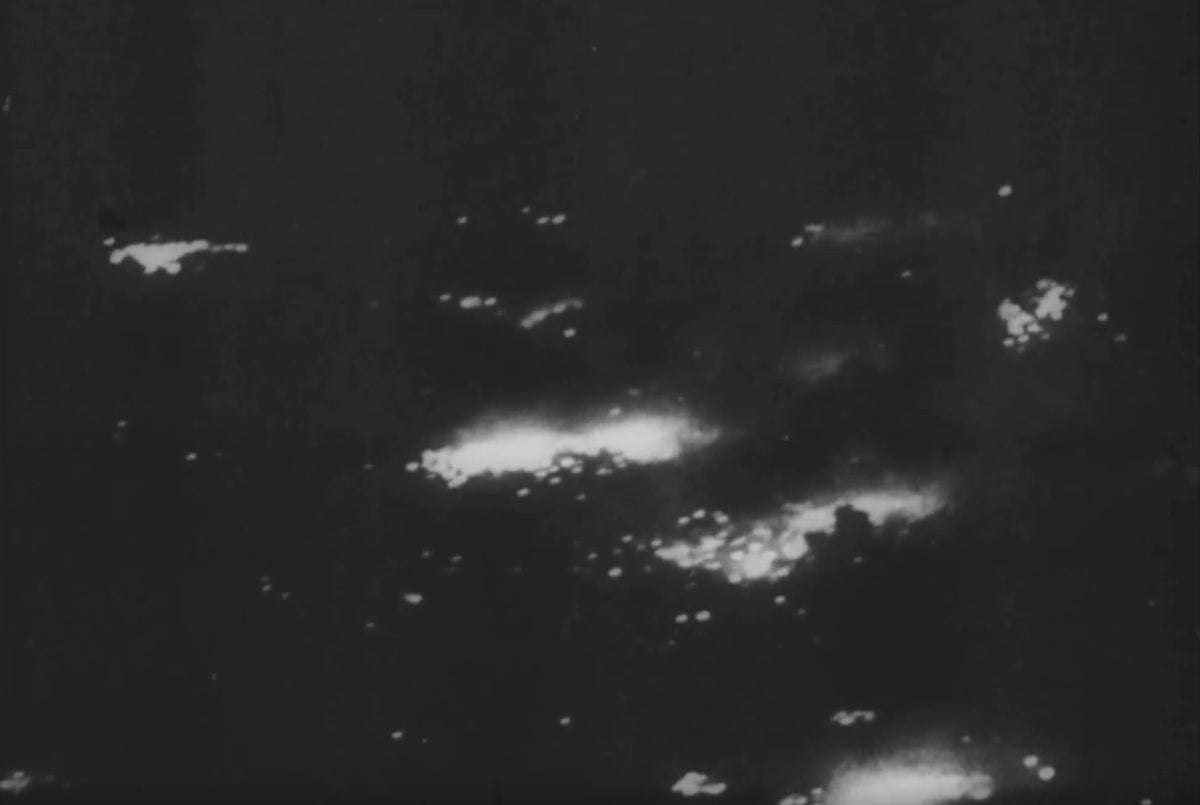
With the bombing wave completely underway, Dresden is burning across multiple parts of the city. Unfortunately, many of the bombs that fell did not always land on target, and in some cases, civilians were also killed as part of the attack.
Fires All Over
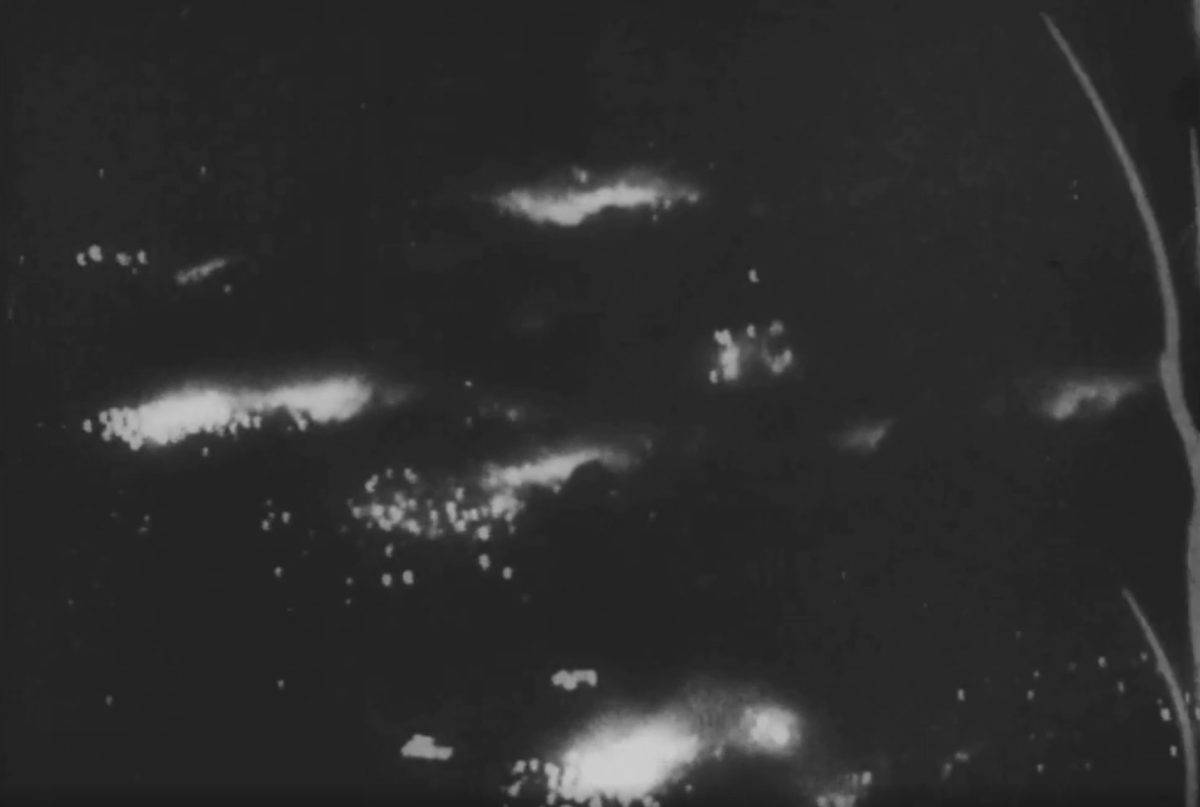
Additional footage in the video shows a small glimpse of the number of fires taking place over Dresden. For the German Army on the ground, it must have been chaos trying to fight these fires while avoiding additional attacks.
More Fires
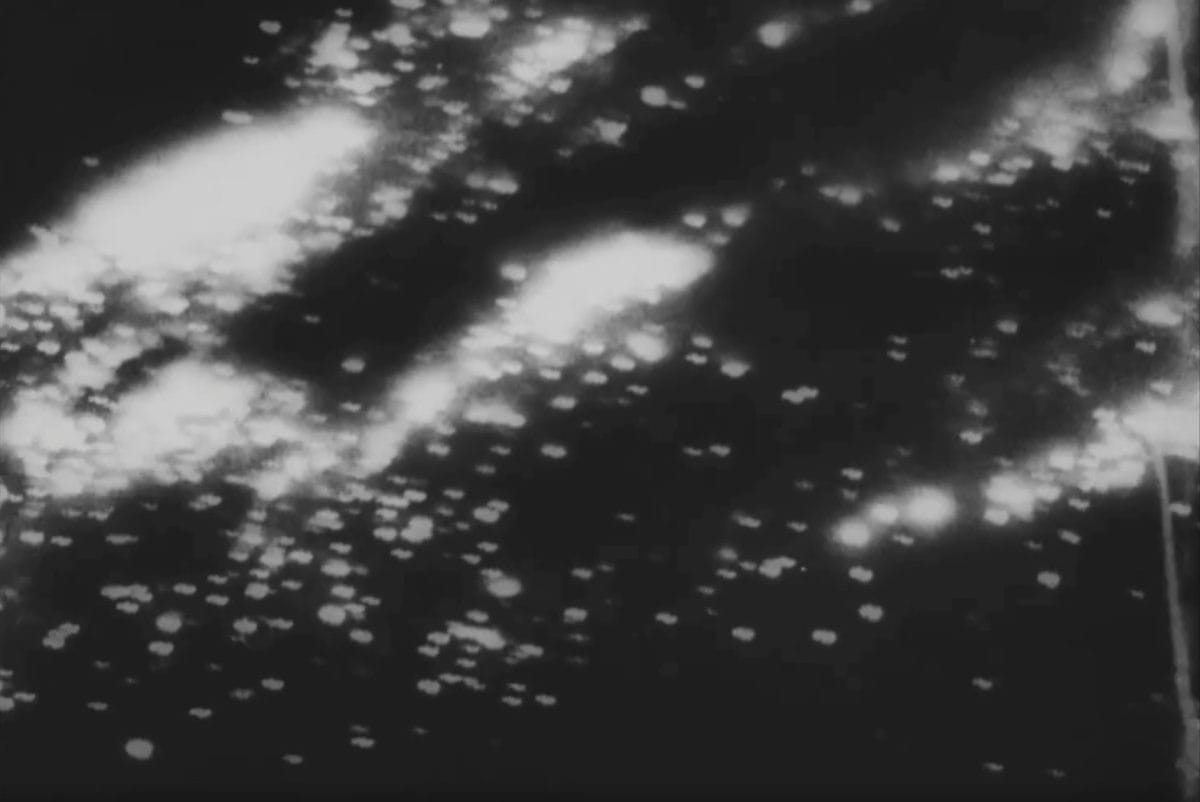
The fires are raging all over Dresden, as shown in this still image from the video. No shortage of captured video shows the full effect of the bombing run as exploded targets burn well into the night.
Incendiary Bombs
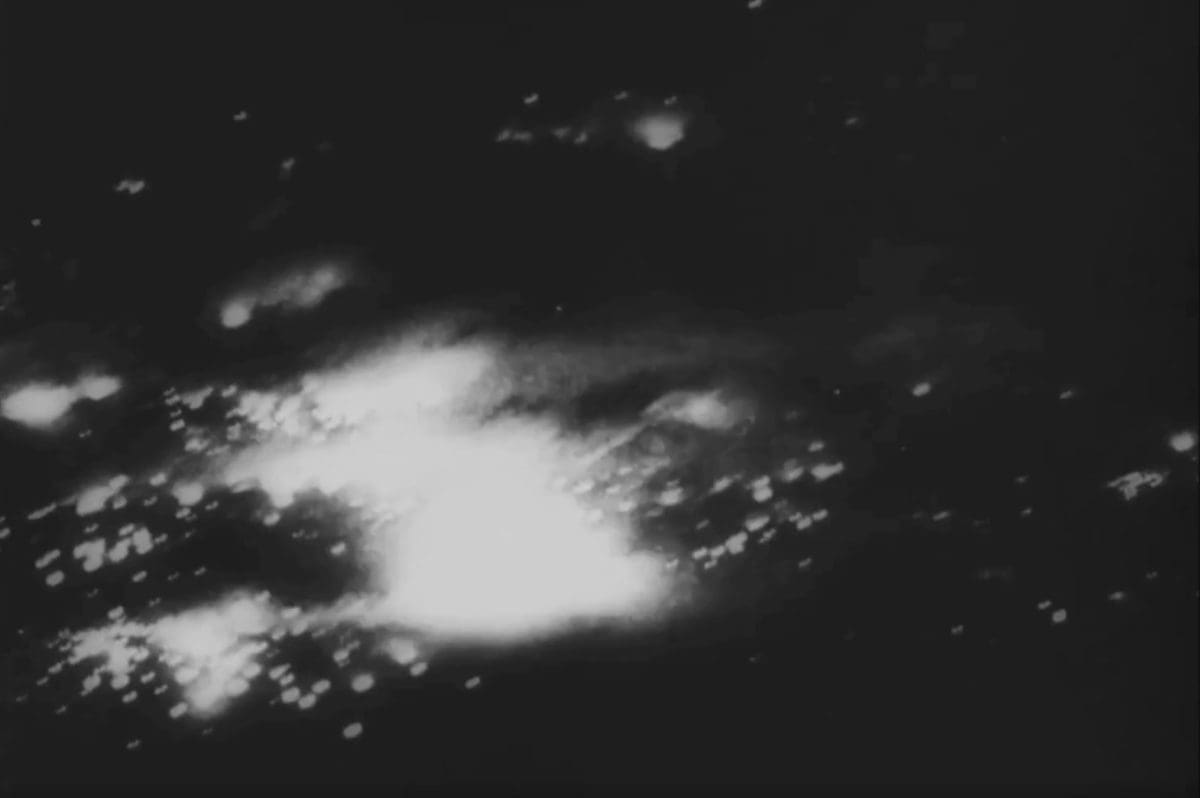
As part of the Allied efforts to destroy German supply lines, incendiary bombs are being dropped alongside traditional munitions. These bombs are designed specifically to start larger fires that cause more destruction across sensitive equipment and infrastructure.
Assisting Soviet Advance
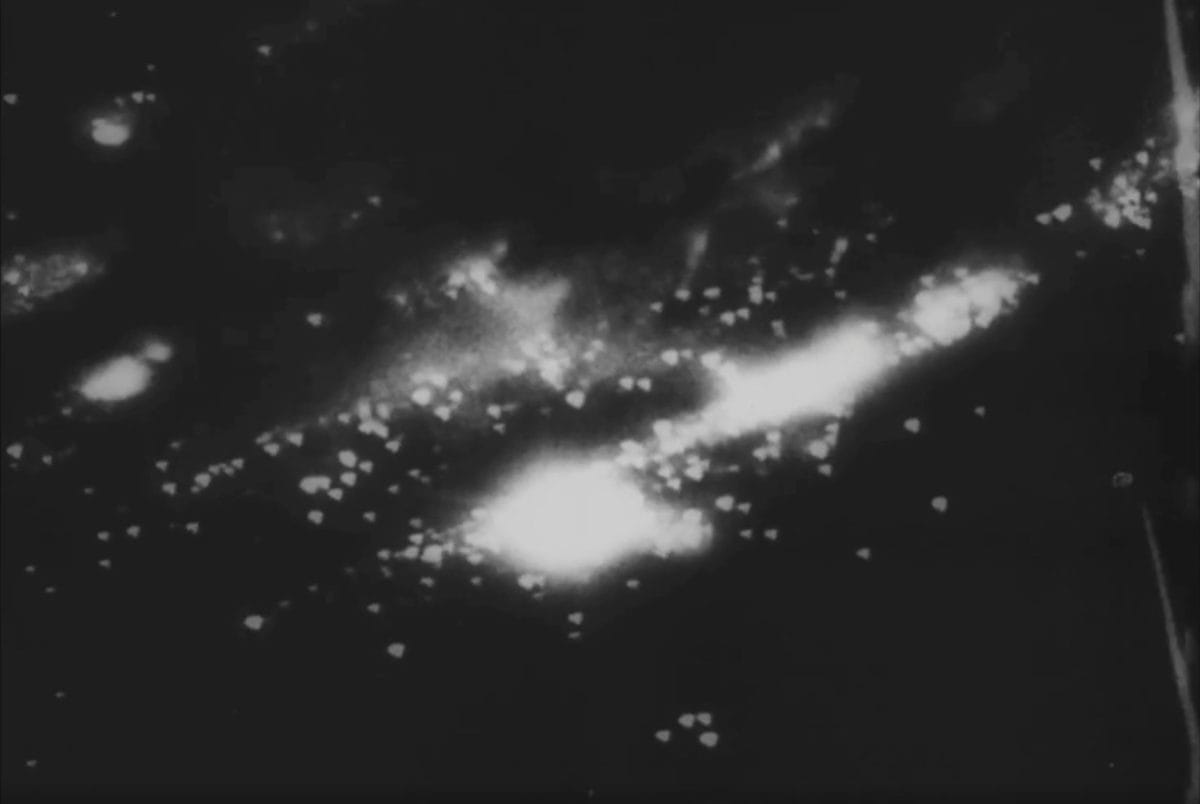
One major reason for the bombing run at Dresden was to assist the Soviet advance deeper into Germany. With the Soviet Army stuck around 70 miles from Dresden, this bombing run would hopefully allow the army to break free and continue its march.
Dresden Bombing Results
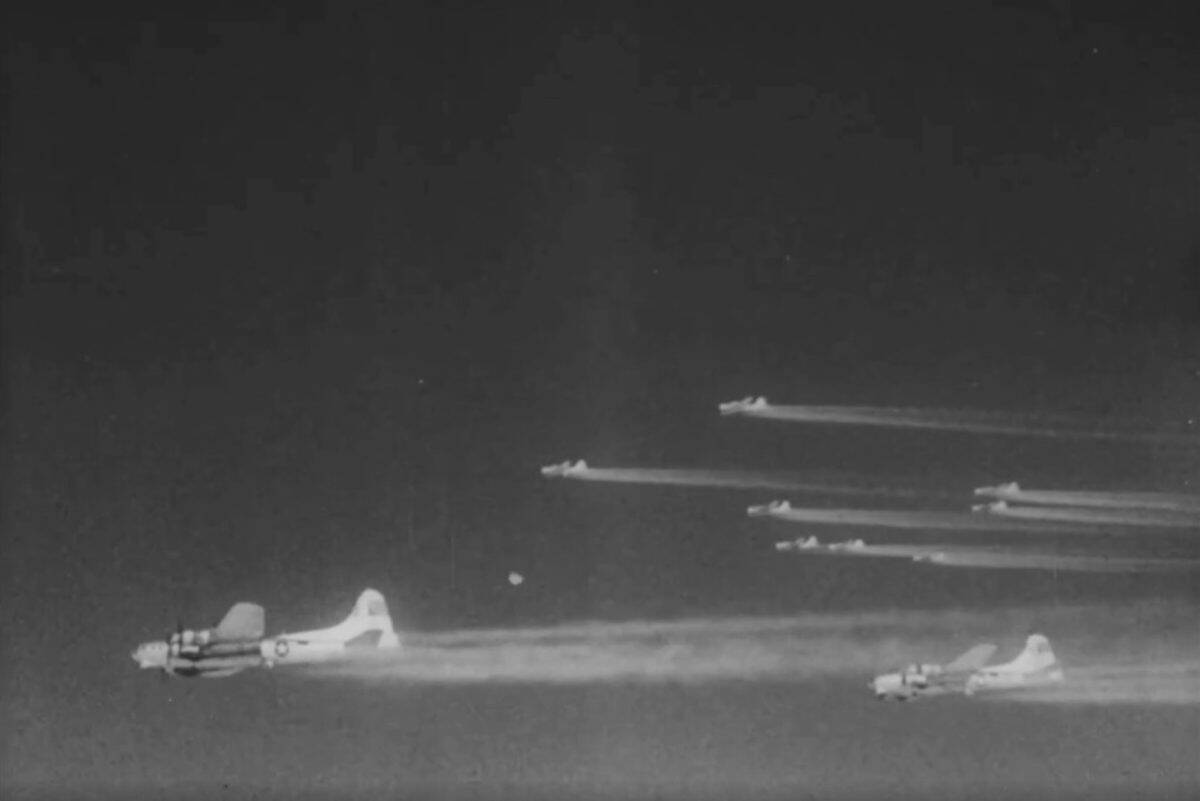
Over roughly 72 hours, the Allies dropped over 3,900 tons of explosive bombs and incendiary devices over Dresden. It’s believed as many as 25,000 people were killed in the initial attacks. The Allies would go on to attack Dresden with three additional bombing runs between March and April to destroy the city’s position as a major rail transport and communication hub for the German Army.
Watch the Full Video
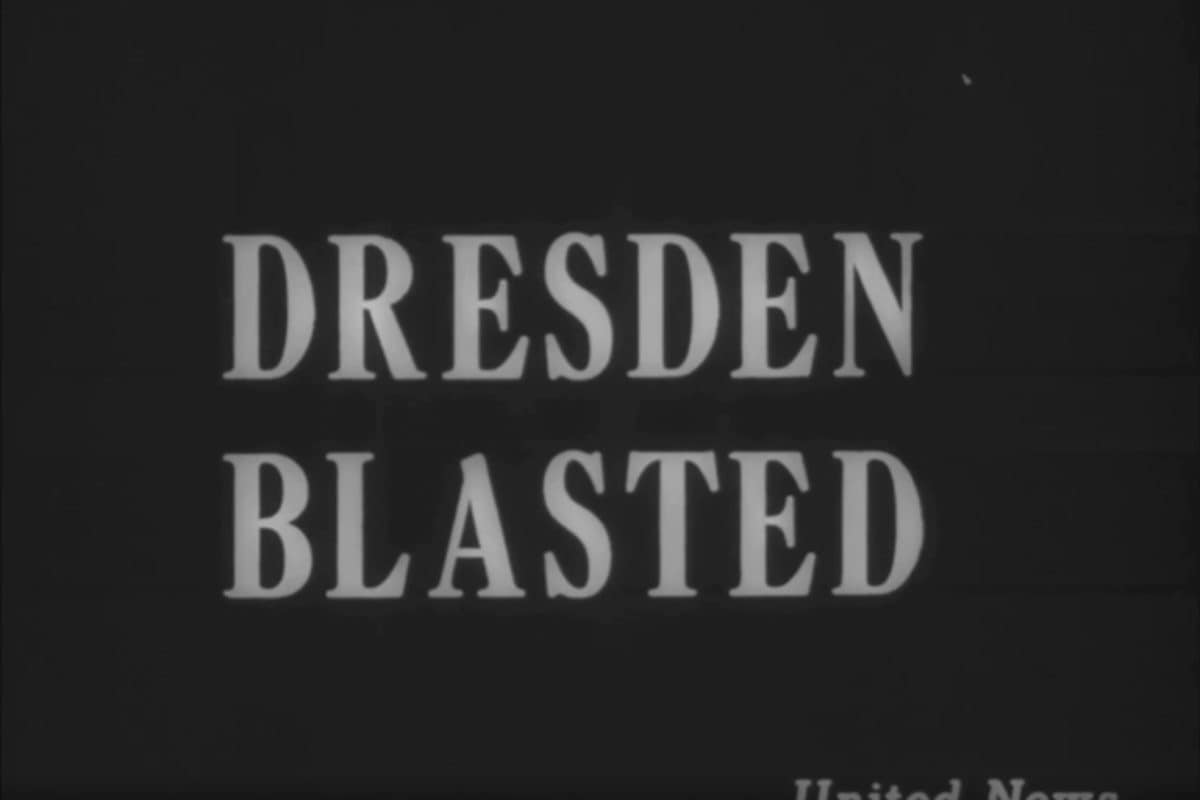
Watch the full video to get a stronger sense of how impactful the falling bombs were on Dresden. The captured video also shows just how easily the explosions could be heard from the bombers as they were so loud and constant.
The image featured at the top of this post is ©Rostislav Glinsky/Shutterstock.com.
